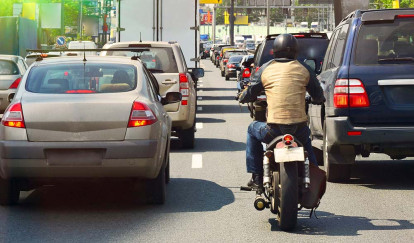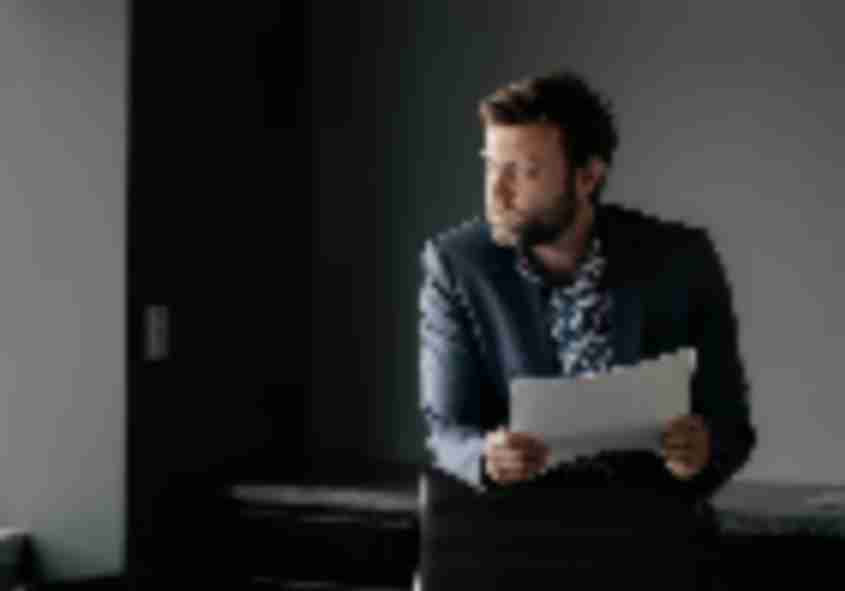
Share This Article
It's spring! The trees are budding, the birds are singing and you're probably trying to remember where you packed away your shorts and t-shirts. But when you get in your car or truck, prepare for another inevitability of spring: More motorcycles will be sharing the roads with us as the weather grows warmer.
Driving a car can require multitasking: you're steering; thinking about what to make for dinner; trying to listen to your car's GPS directions; and — whoa! — that motorcycle came out of nowhere.
Or did it? Did it materialize out of thin air or were you simply so distracted with other things that you didn't notice its approach? Nearly 75% of motorcycle accidents involve another vehicle, and in 66% of those accidents, the other vehicle (i.e., you) violated the motorcyclist's right of way. So, it's not just the motorcyclist's responsibility to stay safe and avoid an accident— it's our job as car and truck drivers, too.
Focus on the Driving Task
First things first: Stop using your commute to manage your life. No texting, eating and drinking, fiddling with the stereo or plugging directions into your GPS. Hands-free phone calls should be brief and only made when necessary. Passengers (including children) can distract you from the road, so if you need quiet in the car to concentrate, don't be afraid to say so. Safely driving a car requires three things: your hands, your eyes and your mind. If you only use two of them?or worse, one!?you're compromising your safety and that of your passengers and others on the road with you. Don't put yourself and others at risk for a traffic accident.
Actively Look for Motorcycles as you Drive
Now that you're fully focused on the road, one of the best things you can do to prevent a crash with a motorcycle is to proactively look for and expect to see motorcycles on the road. Often car drivers don't think about motorcycles, so they're surprised when one appears. In such cases, they may not have enough time to avoid a collision. Change your mindset and expect to see more motorcycles. Make sure you are extra careful to check blind spots when changing lanes or turning at intersections and use your turn signal to alert others of your intentions.
Be Aware at Intersections
In fact, the majority of motorcycle/vehicle accidents occur at intersections. As we just stated, this is often because car drivers simply don't see an approaching motorcycle. Another reason is that because motorcycles are smaller than cars, they often appear further away than they really are and it can be hard to judge speed correctly. Many times, car drivers think they can turn before the motorcycle crosses the intersection, but instead the driver hits the motorcycle, causing an accident. This scenario can lead to a personal injury lawsuit.
Motorcyclists Don't Always Use Brakes to Slow Down
Something else to keep in mind when driving behind motorcyclists is that they won't always use their brakes to slow down. Sometimes they downshift or simply roll off the throttle, which means they'll come to a gradual stop without any brake lights to alert you. This is one reason it's important to always keep plenty of space (at least 4 seconds of distance) between you and the motorcycle in front of you.
Look 10 to 15 Seconds Ahead
Often when we drive a car, we stare straight over the hood. This limits our visual information to the car directly in front of us. Instead, you should look 10-15 seconds ahead. You'll be able to see lights change, vehicles stopping, pedestrians crossing — anything that might require a quick reaction time. You also want to move your eyes around your field of vision. Instead of only looking straight ahead, occasionally move your eyes left and right; check out your side mirrors and take note of any quickly approaching cars or motorcycles. This can be especially important on highways because peripheral vision becomes less effective as your speed increases.
Be Courteous
One of the most important rules of safely sharing the road with motorcyclists is simply, "Be Courteous." Car drivers often think of motorcyclists as speed-demon scofflaws out to terrorize the roads, but the truth is most motorcyclists are just like every driver: They want to travel safely from A to B in the most effective way possible.
If someone cuts into your lane or forgets to use their turn signal, don't take it as a personal attack. Just accept that everyone on the road — whether behind the wheel or behind the handlebars — makes mistakes. Give them the benefit of the doubt and perhaps they'll do the same. That makes the roads safer for us all.
If you have been injured at work or through the negligence of another individual or entity, contact us at (804) 999-9999 or or use the form below to connect with our legal team. We will fight to get you the justice you deserve.
